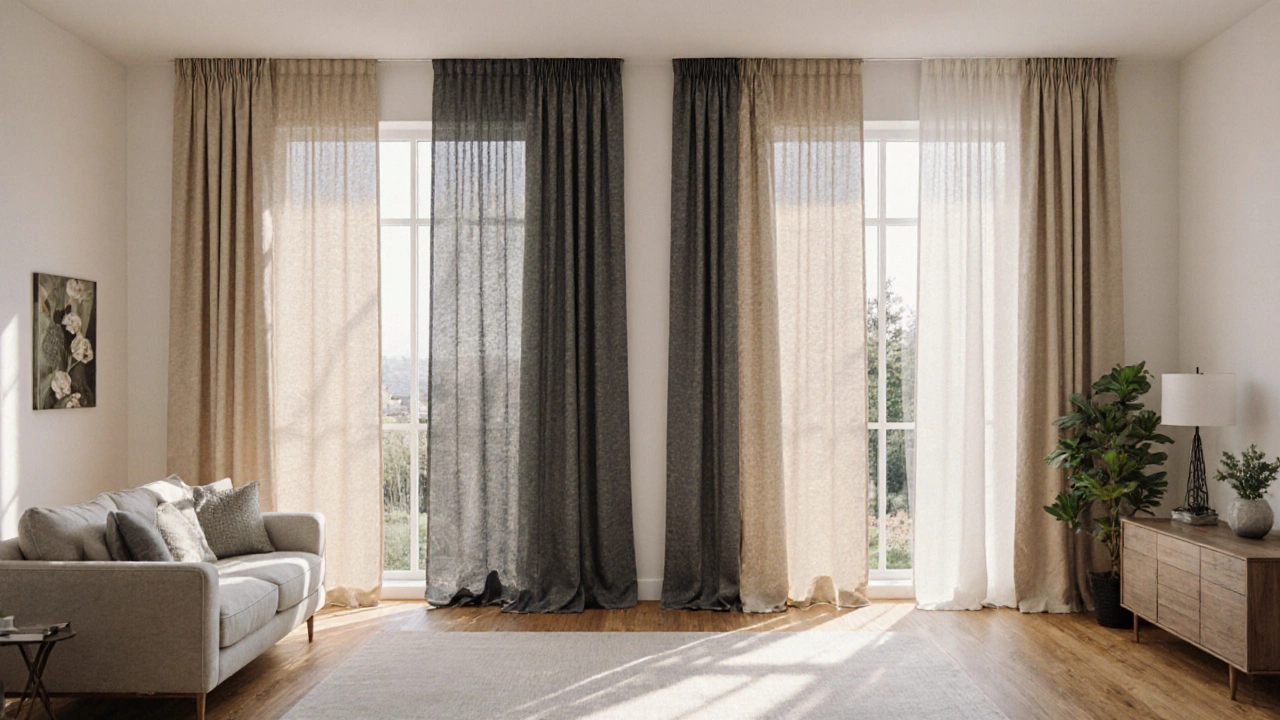Window Treatments: A Practical Guide to Curtains, Blinds & Shades
When you look at a room, the first thing that catches the eye is often the windows. The right window treatments can make a space feel cozy, bright, or private in minutes. Below you’ll find simple advice to help you choose curtains, blinds, or shades that fit your style and budget.
Types of Window Treatments
Curtains are the classic choice. They come in a huge range of fabrics, from light sheers that let the sun in to heavy drapes that block light completely. Because they hang from a rod, you can easily change the look by swapping out the fabric.
Blinds are made of slats that tilt to control light. You’ll find wood, aluminum, or vinyl options. Blinds are great for a clean, modern look and they’re easy to clean, which makes them popular in kitchens and bathrooms.
Shades roll or fold up when you need a clear view. Roman shades add a soft, layered look, while roller shades are sleek and unobtrusive. Shades are a good middle ground if you want light control without the bulk of curtains.
How to Choose the Right One
First, think about the room’s purpose. A bedroom needs privacy, so heavy curtains or blackout shades work well. A living room usually wants a balance of light and style, so light-filtering curtains or wooden blinds fit nicely.
Next, measure your window accurately. For a dramatic effect, let curtains extend a few inches beyond the frame on each side. For blinds and shades, a tighter fit keeps them from sagging and looks cleaner.
Consider maintenance. If you have kids or pets, washable cotton curtains or wipe‑clean vinyl blinds are less of a hassle. In humid areas like bathrooms, choose moisture‑resistant fabrics or PVC blinds to avoid mold.
Budget matters too. You can find budget‑friendly polyester curtains at most home stores, while custom‑made drapes cost more but give a designer feel. Blinds and shades often sit in the middle, with many ready‑made options under £50 per window.
Finally, match the treatment to your décor. If your room has bold colors, neutral curtains keep the focus on furniture. If the walls are plain, patterned drapes can add a pop of personality.
Installation is usually a quick DIY job. Curtain rods mount with a few screws, and most blinds come with a tension rod or brackets. If you’re unsure, many retailers offer free in‑home measurement and fitting.
Energy efficiency is a hidden benefit. Heavy curtains keep heat in during winter and block it in summer, lowering energy bills. Likewise, cellular shades trap air in pockets, providing extra insulation.
For a layered look, combine treatments. A sheer curtain under a blackout drape lets you adjust light without swapping the whole window cover. Blinds paired with a decorative valance add visual interest and extra privacy.
Don’t forget safety. If you have small children, choose cordless blinds or those with safety devices to prevent accidents.
In short, the perfect window treatment balances light, privacy, style, and upkeep. Take a few minutes to assess each room, measure carefully, and pick the option that checks all your boxes.
Ready to upgrade your windows? Start with one room, pick a style you love, and watch how quickly the space transforms.
Explore the top curtain trends of 2025, from sustainable fabrics and bold patterns to smart motorized tracks, with practical tips for every home style.
Oct, 25 2025
Wondering if curtains are still on trend in 2024? This article breaks down what’s actually happening with curtain styles this year. We’ll look at what designers are using, why some people are ditching drapes, and which alternatives are on the rise. You’ll also get practical ideas for making curtains work in any space—without feeling stuck in the past. Expect real talk and helpful tips for your next window update.
Jun, 1 2025

